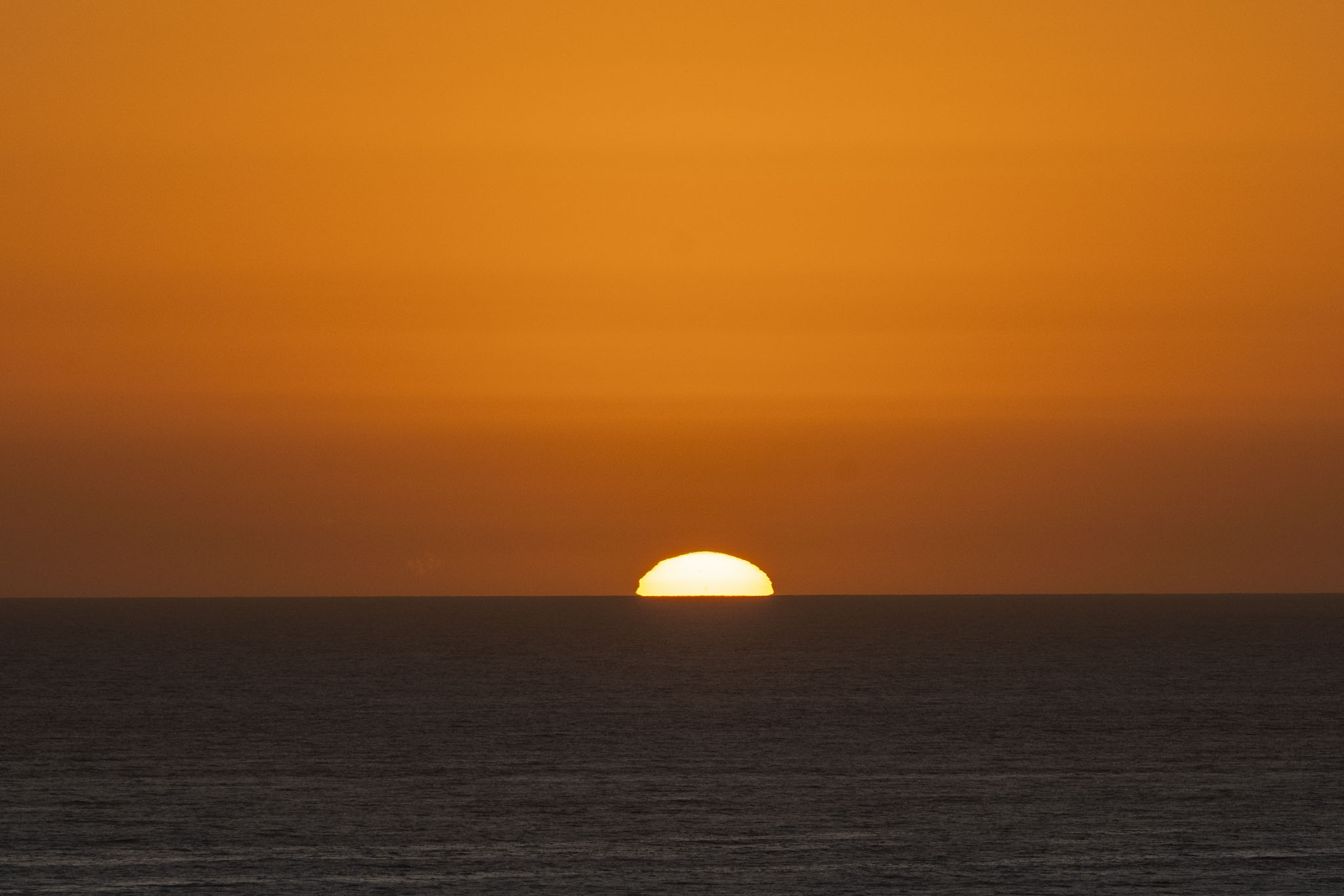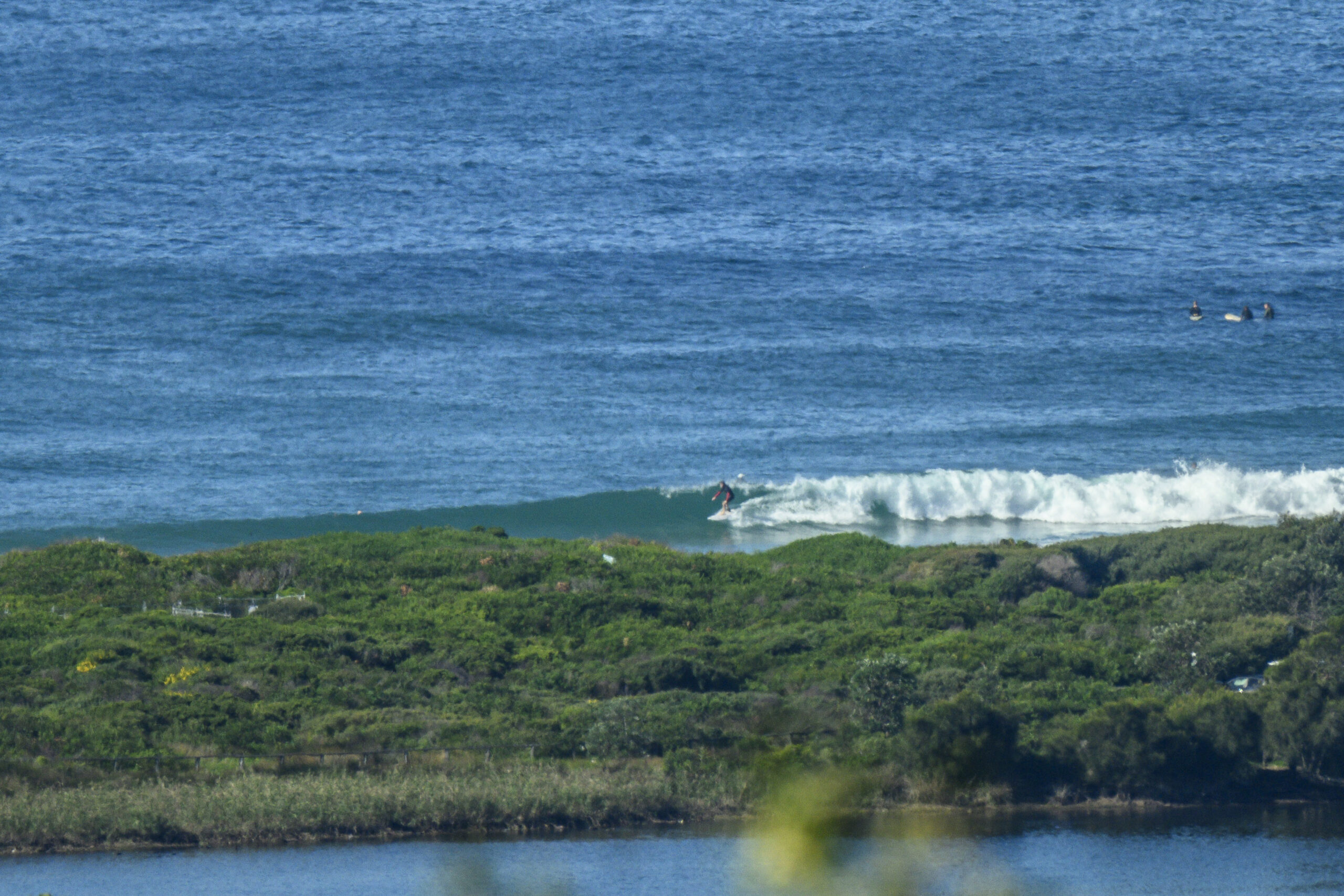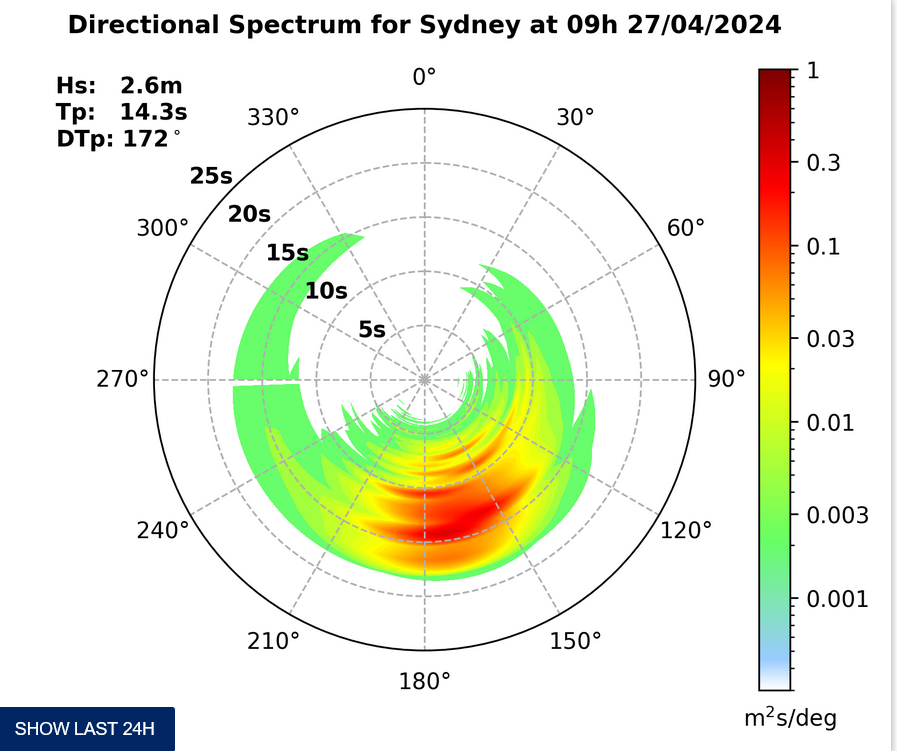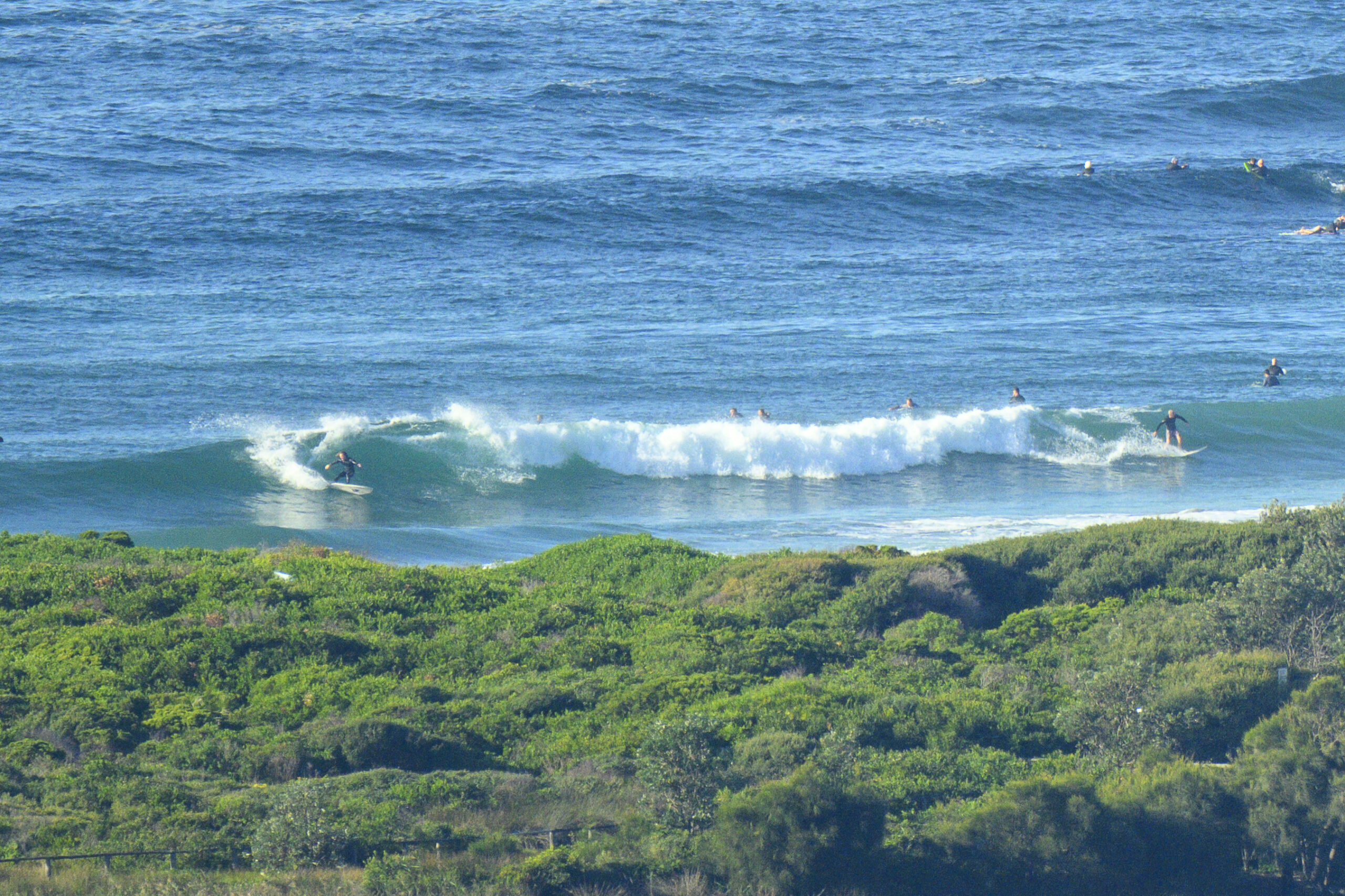While the rain and onshore continue for the time being, here’s a little Mysterious Ripping Yarn Mystery of Giant Waves, Lighthouses and Giant Waves to keep you entertained.. (via The Australian Jan 2-3 2016)
Great Scot! Victorian ghostbuster vindicated at last
- BEN MACINTYRE
- THE TIMES
- JANUARY 2, 2016 12:00AM

The Flannan Islands Lighthouse in Scotland.
Very occasionally history combines with modern science to produce a new answer to an old question.
So it is with the mystery of the Flannan Islands, one of the greatest puzzles in history, a case that has baffled real detectives and armchair sleuths for more than century but that may now have been solved by mathematics and modern oceanography.
The Flannan Islands are seven uninhabited crags of granite that rise out of the sea 30km off the west coast of Lewis, the outermost of the Outer Hebrides, and were a peril to shipping down the centuries. The islanders called them the Seven Hunters.
So in 1899, with typical Victorian ingenuity, David Alan Stevenson (cousin of Robert Louis Stevenson) built a 23m lighthouse on the largest of the islands, on top of the 88m cliffs. Three lighthouse keepers were duly installed.
On Boxing Day 1900, the steamer from Oban came out to relieve the keepers, who had spent three months alone in the Atlantic. The three men had vanished.
The lighthouse door was open, swinging on its hinges. Food was laid out on the table, one of the chairs was knocked over, two sets of oilskins had gone but the third was hanging on its peg. The clocks had wound down. The last entry in the logbook was 9am on December 15. But of the keepers — James Ducat, Thomas Marshall and Donald McArthur — there was not a trace.
The disappearance set off a perfect storm of media speculation. Some argued that the men had fallen out over a woman, and that one had murdered the other two before throwing himself into the sea.
Others wondered whether they might have been kidnapped by German agents, using U-boats to plan an invasion of Britain from the north. Some blamed God, the Devil, or sea monsters. Calvinists from the islands were said to be angered that the lighthouse shone on the Sabbath: might they have taken radical steps to stop it from working?
Poet Wilfrid Wilson Gibson wrote a ghost poem, an instant bestseller, imagining that the three men had been transformed into sea birds and flown away: “Though we hunted high and low and hunted everywhere / Of the three men’s fate we found no trace …”
An Edinburgh policeman, Robert Muirhead, was sent to the island by the Northern Lighthouse Board to solve the mystery. Muirhead was a plodding, practical investigator thrown into a world of superstition.
After interviewing the islanders, measuring the site and studying the weather and tides, he concluded that the men had been carried off by a freak wave, “an unexpectedly large roller had … swept them away with resistless force”. Muirhead’s reasonable explanation was itself swept away in the torrent of lurid conjecture.
But the stolid Scottish detective, it now appears, was almost certainly right.
A paper published recently in the journal Proceedings of the Royal Society A proves that the “rogue wave”, for so long a seafaring myth, is a mathematical reality: vast walls of water can indeed erupt in mid-ocean, the combination of many smaller waves building to form a freak roller of devastating force.
Several otherwise inexplicable occurrences lend support to the theory.
Ernest Shackleton’s epic tale of survival during his Antarctic expedition in 1916 was almost scuppered when the explorer encountered a “gigantic” wave as he piloted his lifeboat from Elephant Island to South Georgia.
In 1995, the liner Queen Elizabeth 2 was hit by a 100ft wave that, according to the captain, “came out of the darkness” and “looked like the White Cliffs of Dover”.
Most marine scientists now agree that the monster wave is a naturally occurring (though rare) event.
In February 2000, a British oceanographic research vessel, the RRS Discovery, encountered the largest waves recorded by scientific instruments in the Rockall Trough, west of Scotland, with individual waves more than 95ft high.
The clues gathered by Inspector Muirhead back in 1901 are consistent with the latest scientific findings: equipment was found strewn around the west landing of the lighthouse at a height of 30.5m above sea level; the iron railings around the crane were twisted; a single boulder weighing at least a tonne was lying on the steps leading up to the lighthouse.
The three lighthousemen, it seems, had rushed out to attend to some emergency and had then been swept away by a mighty wave of the sort that has long featured in maritime folklore but that, for them, turned out to be terrifyingly real.
Science still cannot answer all the questions surrounding the Flannan Islands mystery.
Why were the bodies of the men never found, since the prevailing currents should have washed them towards the mainland? Why did one man leave his sou’wester behind? And why was the outer gate to the lighthouse enclosure bolted shut?
The Flannan Islands lighthouse was an astonishing feat of engineering, and statement of Victorian faith in science, in man’s ability to find technical solutions to the problems of nature.
Inspector Muirhead was a man from the same rational tradition, determined to find a logical, scientific explanation amid a ferment of fantasy, myth and speculation. He solved the case back in 1901, but he has had to wait another century for the proof: a Victorian ghostbuster, vindicated at last.
The Times
~~~~~~~~~~~~~~~~~~~~~~~~~~~~~~~~~~~~~~~~~~~~~~~~~~~~~~~~~~~~~~~~
TG’s New Year Message:
Get out there and Have Fun in the Surf!!
Happy New Year.
Surf forecast:
Last for 2015/First for 2016: Outlook for the week ahead:
Waves all week… but quality as always will depend on the winds and tides, but at least for the first half wind mostly looks like being fairly light.
Friday: 1-2 metre range East South East – down a little from today
Saturday: 1-2 metre range East – watch for the sets; they are coming from a fair way out and may contain a little energy
Sunday: up a little in the 1-2 metre range East
Monday: about 2 metres or more South East
Tuesday: 1-2 metres East South East
Wednesday: 1-2 metre range East
Thursday, Friday: down a little through the 1-2 metre range East.
Hey Don, I think this must be 20 years of TG’s Surf Forecasts ?! It only seems like yesterday, or maybe the day before. Let’s celebrate with a red 🙂
[Indeed, this is the 20th year for RealSurf, so the very least we can do is hoist a toast to the arrival of our second decade! – Don]
Water temp is moving around 21 22 23… There’s a bit of chopped up weed around too.

Weather from the Bureau:
becoming light in the late evening.
Friday 1 January
- Summary

- Min 18
- Max 26
- Partly cloudy.
- Possible rainfall: 0 mm
- Chance of any rain: 0%

Sydney area
Partly cloudy. Light winds becoming east to northeasterly 15 to 20 km/h in the early afternoon then becoming light in the late evening.
Fire Danger – Low-Moderate
UV Alert from 8:40 am to 5:10 pm, UV Index predicted to reach 13 [Extreme]
Around Sydney
| Precis Icon | Location | Min | Max |
|---|---|---|---|
| Sydney | 18 | 26 | |
| Penrith | 16 | 31 | |
| Liverpool | 15 | 30 | |
| Terrey Hills | 15 | 25 | |
| Richmond | 14 | 31 | |
| Parramatta | 15 | 28 | |
| Campbelltown | 14 | 30 | |
| Bondi | 19 | 23 |
Marketing
Saturday 2 January
- Summary

- Min 18
- Max 25
- Partly cloudy.
- Possible rainfall: 0 mm
- Chance of any rain: 5%

Sydney area
Partly cloudy. Light winds becoming southeasterly 15 to 25 km/h in the middle of the day then becoming light in the late evening.
Sunday 3 January
- Summary

- Min 19
- Max 24
- Shower or two developing.
- Possible rainfall: 0 to 2 mm
- Chance of any rain: 50%

Sydney area
Cloudy. Medium (50%) chance of showers, most likely in the afternoon and evening. Winds south to southeasterly 15 to 20 km/h, increasing to 20 to 30 km/h during the morning.
Monday 4 January
- Summary

- Min 19
- Max 23
- Rain at times.
- Possible rainfall: 6 to 25 mm
- Chance of any rain: 70%

Sydney area
Cloudy. High (70%) chance of rain. Winds east to southeasterly 20 to 30 km/h.
Tuesday 5 January
- Summary

- Min 18
- Max 22
- Showers.
- Possible rainfall: 8 to 20 mm
- Chance of any rain: 90%

Sydney area
Partly cloudy. Very high (90%) chance of showers. Winds east to southeasterly 15 to 25 km/h turning southerly 15 to 20 km/h later.
Wednesday 6 January
- Summary

- Min 18
- Max 23
- Showers.
- Possible rainfall: 6 to 25 mm
- Chance of any rain: 80%

Sydney area
Partly cloudy. High (80%) chance of showers. Winds southerly 20 to 30 km/h.
Thursday 7 January
- Summary

- Min 18
- Max 24
- Shower or two.
- Possible rainfall: 4 to 15 mm
- Chance of any rain: 70%

Sydney area
Partly cloudy. High (70%) chance of showers. Winds south to southwesterly 15 to 20 km/h increasing to 25 km/h before turning southeasterly 15 to 20 km/h during the day.
Wind is here:
https://www.windyty.com/?-32.101,150.601,5
Tides are here:
http://www.rms.nsw.gov.au/documents/maritime/usingwaterways/tides-weather/tide-tables-2015-16.pdf



